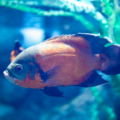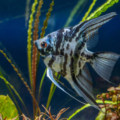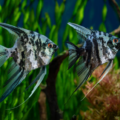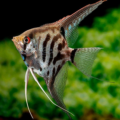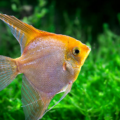When it comes to keeping pet fish, many enthusiasts are drawn to the graceful beauty of freshwater angelfish. These elegant creatures have captivated hobbyists for decades with their striking appearance and serene demeanor. But the question on many aspiring fish owners’ minds is: are freshwater angelfish easy to keep?
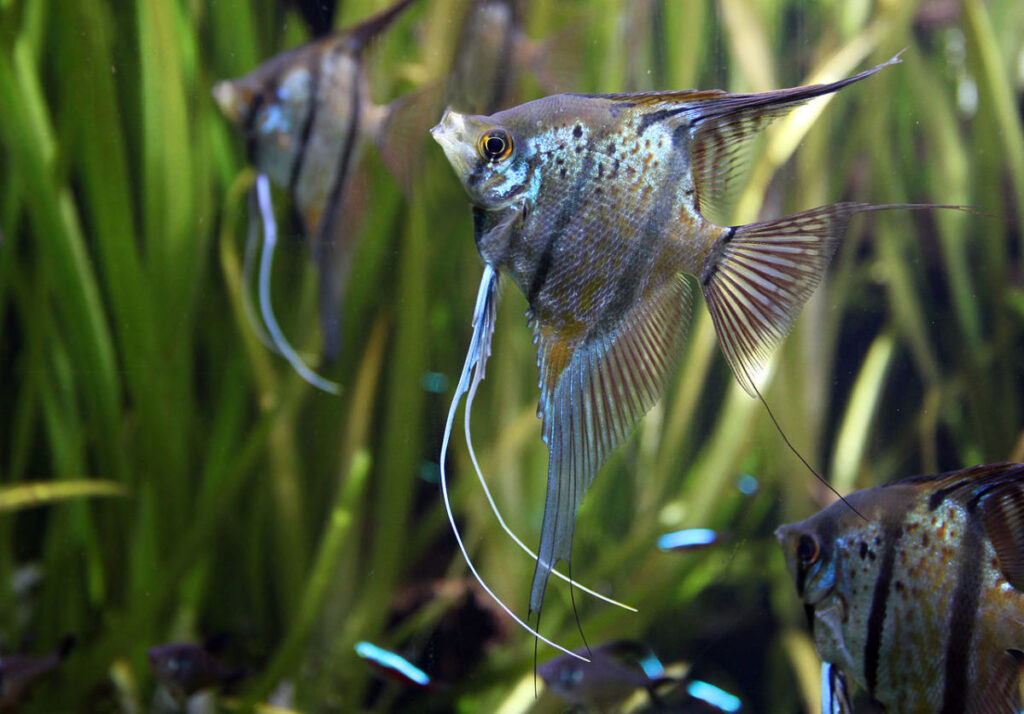
Characteristics and Appearance of Freshwater Angelfish
Before diving into whether freshwater angelfish are easy to care for, let’s take a moment to appreciate their unique characteristics.
Freshwater angelfish, scientifically known as Pterophyllum scalare, boast a triangular body shape with elongated dorsal and anal fins.
Their mesmerizing pattern combinations of stripes, spots, and vibrant colors make them a true centerpiece in any aquarium.
Habitat and Natural Environment of Freshwater Angelfish
In the wild, freshwater angelfish are native to the Amazon River basin in South America. They thrive in warm, slow-moving waters with a pH range between 6.5 and 7.0.
Recreating their natural environment in an aquarium requires attention to water temperature, quality, and appropriate tank decorations to provide hiding spots.

Tank Setup and Requirements for Freshwater Angelfish
Setting up a suitable tank for freshwater angelfish is crucial for their well-being. A tank size of at least 20 gallons is recommended to accommodate their active swimming habits.
Maintaining a stable temperature between 78-82°F is essential, and investing in a reliable heater and thermometer is highly advised.
Additionally, a well-functioning filtration system and regular water changes are necessary to keep the water clean and free from toxins.
Angelfish as Centerpiece Fish in Tropical Aquariums
Angelfish are a popular choice for aquarium fish enthusiasts, known for their role as centerpiece fish in tropical aquariums.
This section explores how angelfish interact with other tropical fish, including peaceful fish like betta fish, and their compatibility in diverse setups.
Learn about the behaviors of female angelfish and how they coexist in a community tank. Marine angelfish add a vibrant touch to marine tanks, enhancing the beauty and diversity of your fish-keeping experience.
Feeding and Nutrition for Freshwater Angelfish
Feeding your freshwater angelfish a balanced diet is paramount for their health.
They are omnivorous by nature, and their diet should consist of a mix of high-quality flakes or pellets supplemented with small live or frozen foods.
Offering a variety of foods, such as brine shrimp, bloodworms, and even small pieces of vegetables, helps mimic their natural feeding behavior.

Compatibility of Freshwater Angelfish with Other Fish Species
While freshwater angelfish can live peacefully with many fish species, compatibility should be considered to prevent aggression and territorial disputes.
Avoid keeping them with overly aggressive or nippy fish that may nip at their long fins. Good tank mates for angelfish include peaceful community fish like tetras, gouramis, and corydoras catfish.
Breeding and Reproduction of Freshwater Angelfish
Breeding freshwater angelfish can be a rewarding experience for dedicated hobbyists.
To encourage breeding, a separate breeding tank with suitable spawning sites, such as broad-leafed plants or a flat slate, should be provided.
Angelfish are known to exhibit parental care and guarding behaviors, making them attentive and protective parents.
Nurturing: From Hatchlings to Adult Fish
Raising angelfish from baby fish to adult angelfish requires careful attention to their specific needs.
This section covers the essentials of breeding angelfish, focusing on creating ideal conditions for successful breeding and nurturing.
Feeding newly hatched brine shrimp and baby brine shrimp is crucial for the growth of young angelfish.
Learn how angelfish tend to thrive with proper care and how they can become the vibrant centerpiece fish in any angelfish aquarium.

Common Health Issues and Diseases in Freshwater Angelfish
Like any living creature, freshwater angelfish are susceptible to certain health issues and diseases.
Some common ailments include ich (white spot disease), fin rot, and fungal infections.
Maintaining optimal water conditions, avoiding overcrowding, and quarantining new fish before introducing them to the main tank can help minimize these risks.
Tips for Keeping Freshwater Angelfish Happy and Healthy
To ensure the well-being of your freshwater angelfish, consider the following tips:
- Provide a well-maintained tank environment with proper water parameters.
- Offer a varied and balanced diet that meets their nutritional needs.
- Choose suitable tank mates that get along well with angelfish.
- Monitor water quality regularly and perform routine maintenance.
- Observe their behavior and appearance regularly for any signs of illness.
Conclusion: Final Thoughts on Keeping Freshwater Angelfish
In summary, while keeping freshwater angelfish requires attention and commitment, they can be a rewarding addition to any aquarium.
With proper care and a suitable tank setup, these elegant creatures can thrive and add an enchanting touch to your aquatic haven.
So, if you’re up for the challenge, embark on the journey of keeping freshwater angelfish and creating a harmonious underwater world for these remarkable fish.

